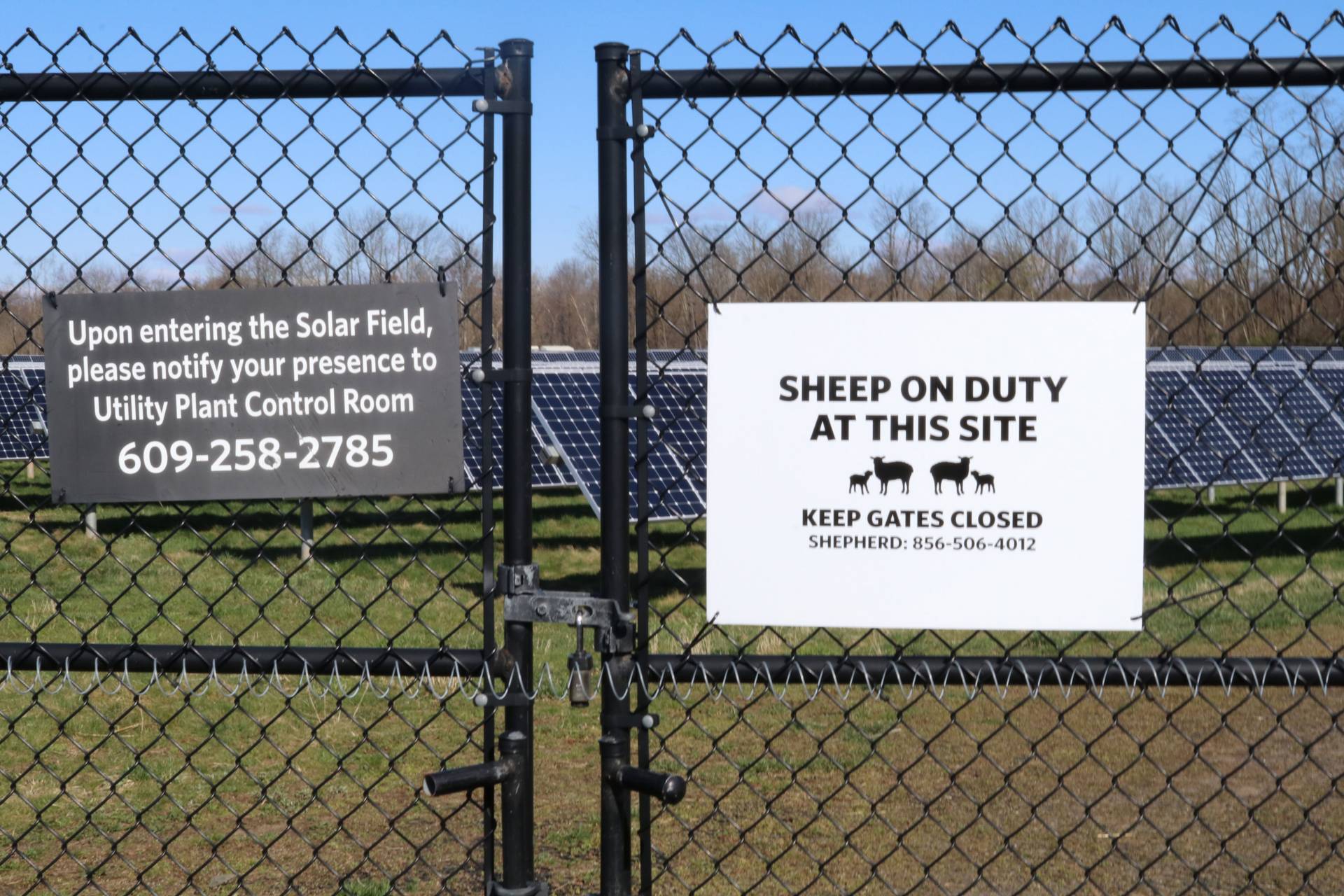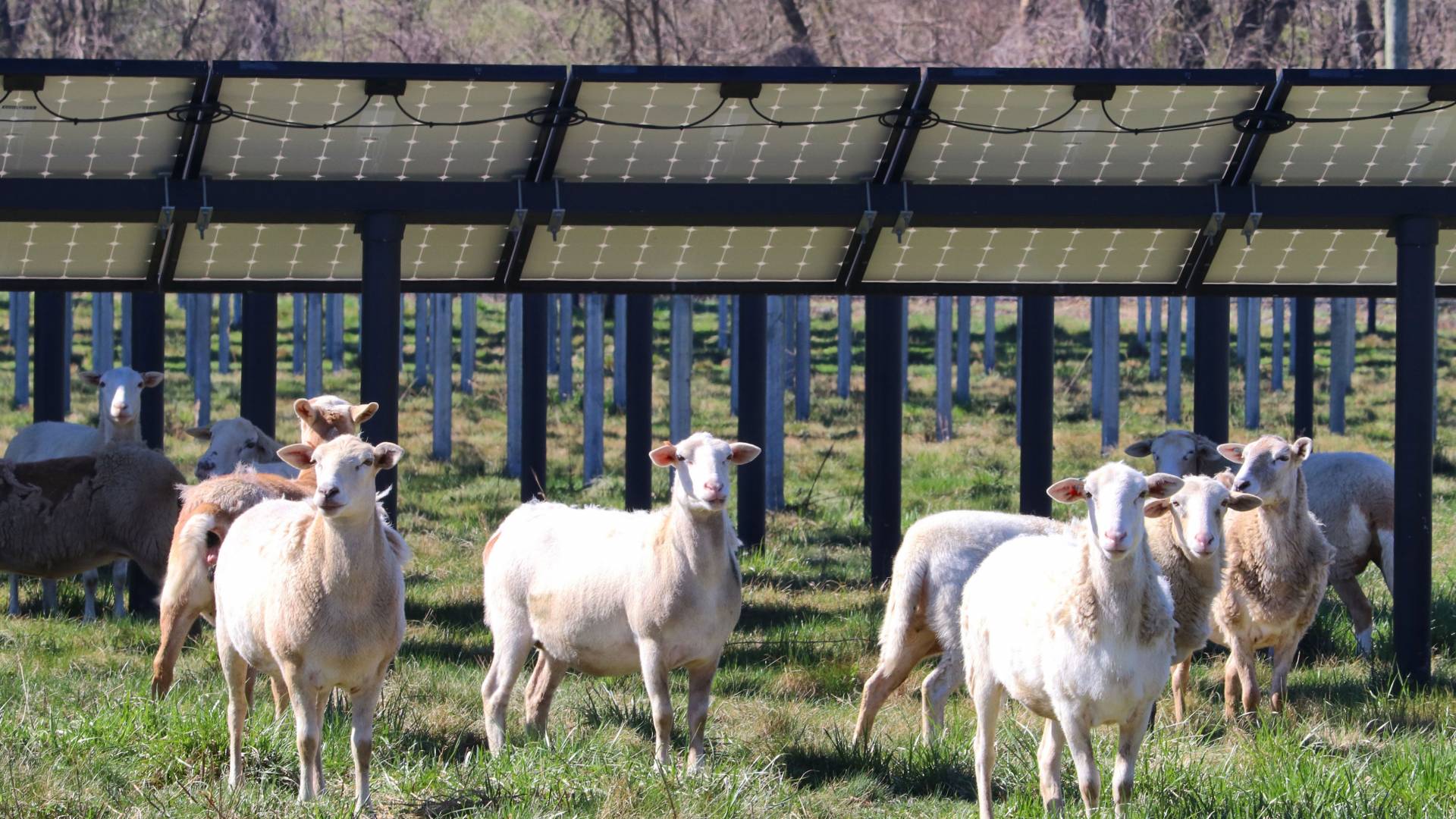The Princeton University Solar Field is now home to a fleecy flock through a partnership with a local farmer. The sheep graze on the grass and weeds, eliminating the need for mowing. Keeping the grass trim helps maintain the efficiency of the solar panels, which supply clean power to the University.
Warning: This story contains sheep puns. Ewe may be exposed to herd humor. (No kidding!)
Princeton University’s Solar Field is now even more sustainable thanks to a fleecy flock that keeps the 27 acres trim and tidy.
The field, located on University lands in West Windsor, has hosted a herd of sheep since March. The new ewe system is a creative and economical way to keep grass and weeds from reducing the efficiency of the 16,528 photovoltaic panels that provide solar energy to campus.
The solar panels were installed in 2011 as part of the University’s Sustainability Plan. They can reach 4.5 megawatts of power and produce nearly 6 percent of the University’s total annual electric use.
“The panels are arranged in long strings, wired together in series,” Energy Plant Manager Ted Borer said. “If plants grow higher than the solar panels they cause shade. So if just one panel is in shade, all the panels in that string will under-perform.”

The Katahdin sheep live on the 27-acre solar field from March through November, and will return next spring. The field is fenced so the sheep won’t be on the lam, allowing them to nibble and nap along the pasture as they please.
The 75 Katahdin sheep were raised by farmer Julie Bishop of Franklin Township, New Jersey. Bishop’s sheep have been dining out at solar fields in the state for years.
Instead of having to mow the lawn or kill the weeds, the sheep do the job naturally. No toxic herbicides, gas-powered mowers or trimmers needed.
“The sheep are a welcome addition to University Facilities’ maintenance program for the solar fields,” said E.J. May, assistant manager for grounds operation. “Not only are we reducing costs and emissions, we are providing a source for the sheep to graze and helping out the local economy through our partnership with the farm.”
Borer added that leasing the sheep costs less than previous maintenance, which included frequent mowing. It’s worked so well that Facilities is ruminating sharing the shearers for other campus landscaping.
“We ‘cud’ not ask for a better method. The sheep keep the grass down and they don’t damage the delicate panels in the process,” Borer said.
Facilities may add more sheep to the tight-knit crew as the grass grows longer this summer. The flock is all female, though one male will join the fold in July in the hopes of making little lambs before spring.
“It’s a tough job, but some ram has to do it,” Borer joked.
The herd will hang at the solar field through November, nibbling and napping along the pasture as they please.
“The field is fully fenced, so they won’t be on the lam,” Borer said. “We also added a small electric fence to keep out predators.”
When winter comes, Bishop and her Australian Cattle Dog will pack up the pack and hoof it home.
“Don’t worry, the wooly workers will be baaaack next year,” May said with a laugh.
And come next April, you can tour the solar field and peep the sheep during the Office of Sustainability’s annual Earth Month celebration.
Lisa Nicolaison contributed reporting for this story.





